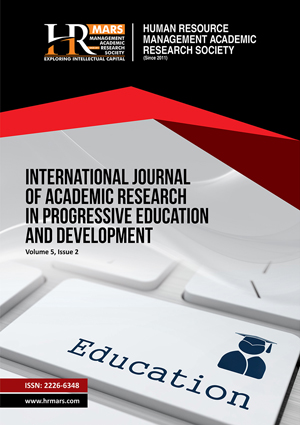
ISSN: 2226-6348
Open access
This study aimed to examine the effectiveness of the Analytic Phonics Teaching Method in improving English pronunciation proficiency among EFL students. A quasi-experimental design was employed, involving 80 participants divided into control and experimental groups. Pre- and post-pronunciation tests served as the primary instruments to measure pronunciation proficiency, and data were analyzed using paired and independent samples t-tests. The experimental group, taught using the Analytic Phonics Method, demonstrated statistically significant improvements in post-test scores (t(39) = -3.266, p = .002) with a moderate effect size (d = -0.516). While the control group also exhibited significant progress (t(39) = -6.375, p < .001) with a large effect size (d = -1.008), no statistically significant differences were observed between the two groups in post-test scores (t(78) = -0.565, p = .574). These findings suggest that the Analytic Phonics Method enhances pronunciation skills but does not significantly outperform conventional teaching methods over a short intervention period. The study concludes that systematic phonics instruction is effective for improving EFL pronunciation proficiency and recommends integrating multimedia tools and targeted strategies for addressing irregular words to enhance its application. Implications include providing professional development for educators, incorporating phonics into curricula, and using digital platforms for learner engagement. Future research should explore longitudinal effects, diverse participant demographics, and the integration of advanced technologies to refine phonics instruction further.
Blevins, W. (2017). Phonics from A to Z: A practical guide (3rd ed.). Scholastic.
Chen, M., Goh, H. S., Soo, R. S., & Yin, G. (2022). The effectiveness of an instructional guide on Chinese pre-service EFL teachers’ knowledge in teaching phonics. Studies in English Language and Education, 9(2), 554–573.
Chen, M. J., Yin, G. J., Goh, H. S., Soo, R. S., Nor, R., Harun, S. R., & Wong, W. L. (2022). Theoretical review of phonics instruction among EFL beginner-level readers in China. Journal of Academic Research in Progressive Education and Development, 11(2), 449–466.
Darcy, I. (2018). Integrating pronunciation into the second language classroom. Language Teaching, 51(1), 1–19.
Dilgard, C., Hodges, T. S., & Coleman, J. (2022). Phonics instruction in early literacy: Examining professional learning, instructional resources, and intervention. Journal of Literacy Research, 54(1), 34–50.
Fang, Y. (2022). Problems and suggestions to improve pronunciation skills of English language learners in China. Journal of Language Teaching Research, 5(3), 123–140.
Farrell, T. S., & Jacobs, G. M. (2020). Essentials for successful English language teaching. Bloomsbury Publishing.
Flege, J. E. (1995). Second language speech learning: Theory, findings, and problems. In W. Strange (Ed.), Speech Perception and Linguistic Experience: Issues in Cross-Language Research (pp. 233–277). York Press.
Friedman, A. J. (2019). Using gamification to enhance EFL learners’ engagement in pronunciation training. Language Learning & Technology, 23(2), 43–65.
Jahara, S. F., & Abdelrady, A. H. (2021). Pronunciation problems encountered by EFL learners: An empirical study. Arab World English Journal, 12(4), 194–212.
Li, S., & Woore, R. (2021). The effects of phonics instruction on L2 phonological decoding and vocabulary learning: An experimental study of Chinese EFL learners. System, 103, 102677.
Liu, H. (2020). Teachers' beliefs and practices towards teaching English pronunciation among EFL senior high school teachers in Yunnan province, China. Journal of Applied Linguistics, 36(4), 12–28.
Low, E. L. (2021). EIL pronunciation research and practice: Issues, challenges, and future directions. RELC Journal, 52(1), 22–34.
Marjerison, R. K., & Yang, S. (2022). Dialects, motivation, and English proficiency: Empirical evidence from China. Frontiers in Psychology, 13, 999345.
O’Brien, B. A., Seward, R., & Zhang, D. (2022). Multisensory interactive digital text for English phonics instruction with bilingual beginning readers. Education Sciences, 12(11), 750.
Parker, A. (2019). Developing EFL learners’ self-confidence through phonics-based pronunciation instruction. Language Education in Asia, 10(2), 121–138.
Rose, H., McKinley, J., Xu, X., & Zhou, S. (2020). Investigating policy and implementation of English medium instruction in higher education institutions in China. London: British Council.
Scarparlo, M., & Hammond, J. (2017). Multimodal approaches to EFL phonics instruction: Building engagement through technology. System, 65, 45–56.
Solso, R. L., MacLin, O. H., & MacLin, M. K. (2007). Cognitive Psychology (8th ed.). Pearson.
Wen, Q., & Zhang, H. (2020). China going global: Challenges and responses in English as a foreign language teaching and teacher education. In H. Wen & Z. Huang (Eds.), English Language Teaching and Teacher Education in East Asia: Global Challenges and Local Responses (pp. 113–133). Springer.
Wu, Q. (2020). A case study on the influence of Chinese regional dialects on English vowel-nasal pronunciation and correction. Open Access Library Journal, 7(9), 1–9.
Yuan, M., & Dervin, F. (2020). An introduction to ethnic minority education in China: Policies and practices. Springer Nature.
Zhang, X., Lau, C., & Su, Y. (2023). Home environment and development of English as a second/foreign language for young children in Asian contexts: A systematic review and meta-analysis. Early Education and Development, 34(1), 274–305.
Li, L., Tahir, M. H. B. M., & Yin, T. T. (2025). The Effects of Analytic Phonics Teaching on EFL Pronunciation: A Case Study in GuangDong. International Journal of Academic Research in Progressive Education and Development, 14(1), 725–733.
Copyright: © 2025 The Author(s)
Published by HRMARS (www.hrmars.com)
This article is published under the Creative Commons Attribution (CC BY 4.0) license. Anyone may reproduce, distribute, translate and create derivative works of this article (for both commercial and non-commercial purposes), subject to full attribution to the original publication and authors. The full terms of this license may be seen at: http://creativecommons.org/licences/by/4.0/legalcode